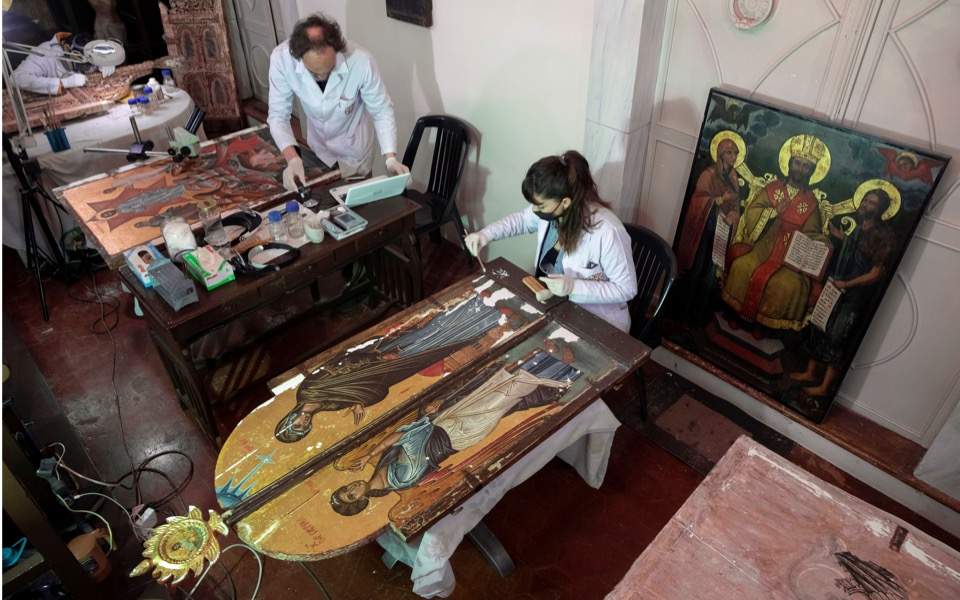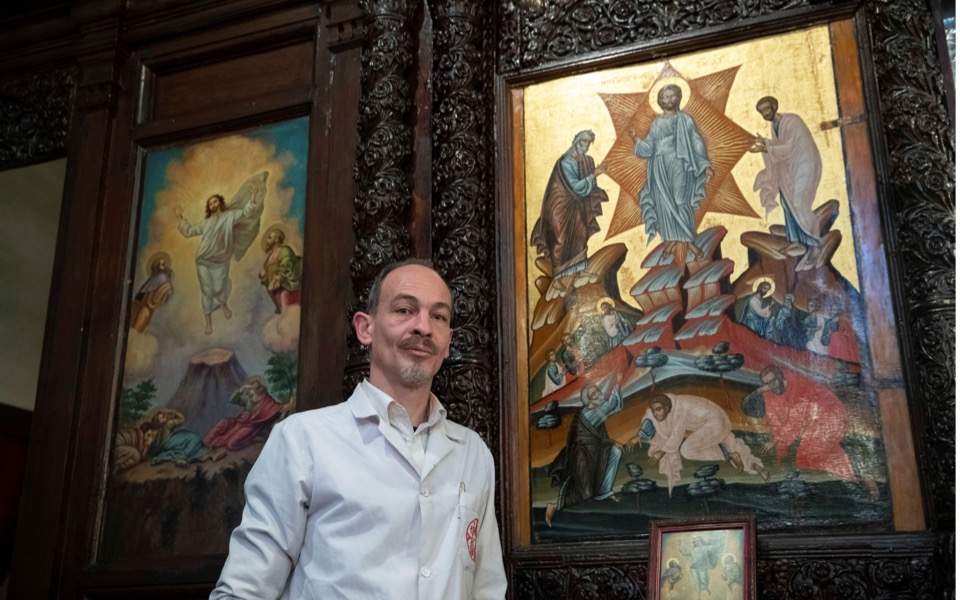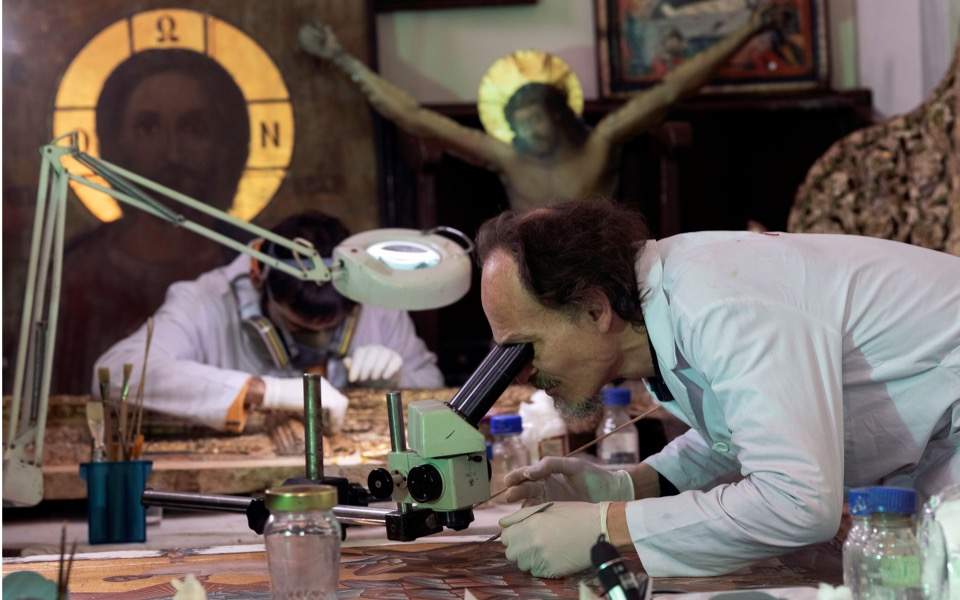Greek restorer Venizelos Gavrilakis uses microscopes, cotton swabs and a delicate touch to bring artefacts back to life in churches in Istanbul, where concerns have grown about the preservation of its Byzantine history.
Since moving from Thessaloniki eight years ago, Gavrilakis, 44, and his colleagues have preserved icons, frescos and paintings in 25 Greek Orthodox churches in the city, he said.
Their latest job restoring artefacts including a 16th century depiction of the Transfiguration of Jesus Christ took longer than planned due to coronavirus-related restrictions.

Throughout the city’s Christian Byzantine and then Muslim Ottoman history, before Turkey’s modern republic, many such religious and cultural works were damaged or lost in war or abandonment, or altered by less-skilled painters.
Gavrilakis, who gives a lifetime guarantee for his work, said the restoration is meant to send a message of unity and longevity at a time when the pandemic has temporarily kept many worshippers apart.
“The pandemic will pass, in order to fight it we all should remain spiritually united,” Gavrilakis said. “Our work on these precious and timeless artefacts will always be there for the people to see it and get inspiration and strength from it.”

Turkey’s decision last year to convert the famed Hagia Sophia as well as the Chora church, another local Byzantine landmark, into mosques sparked criticism from some church leaders and Western countries. Some experts also worried the conversion could harm frescos and other artefacts in the 6th century Hagia Sophia.
Gavrilakis trained in Italy and Greece, where he had worked on more than 40 churches in the north. In Istanbul the oldest icon he and his team, called Ieri Parakatathiki Labs, have restored is a Fayum portrait from the 2nd or 3rd century B.C.
The artefacts, he said in an interview, “remind people of the unlimited possibilities of the human mind that can create such wonderful things that live though the centuries.”
Sourced By: Reuters
